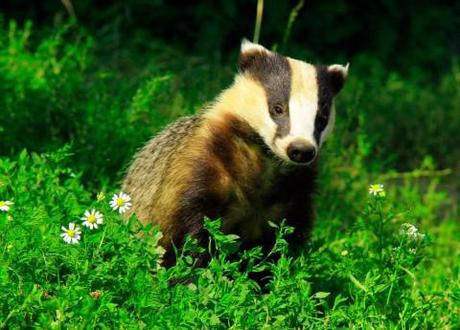 A badger. MMMMM. Photocredit: Ian Rentoul / Shutterstock
A badger. MMMMM. Photocredit: Ian Rentoul / Shutterstock
The background
As the government gives the go ahead for badger culling in England this autumn in order to protect cattle from tuberculosis, celebrity chef Clarissa Dickson Wright has an interesting solution: we should all eat them.
100,000 badgers could be killed across the country if the proposals for culling go through. That’s a lot of meat. As many as 26,000 cows are thought to have died of TB last year. Studies have shown that culling disrupts badger’s social groups, and means they move on (taking TB with them); culling could reduce cattle infection by 16 percent, but that figure is not certain. There is, in fact, a BCG jab which acts as a vaccine for badgers, which has been used in England and Wales. An anti-culling petition has gathered over a hundred thousand signatures; Queen singer Brian May has even spoken out against it. But does that mean that we should fire up our barbecues?
“There’s going to be a cull, so rather than just throw them in the landfill site, why not eat them? Either make a ham or treat it like pork. Baste it properly and marinate it properly and cook it in a casserole,” said Clarissa Dickson Wright, quoted by Rose Prince in The Telegraph.
Desperate meat for desperate times
Wright, said Rose Prince in The Telegraph, claims that badger “hams” were available in West Country pubs until the 1992 Protection of Badgers Act. Prince grew up there, “and never saw a badger ham.” And if they carry so many diseases, surely most “would balk at the idea of consuming its meat.” Humans can get bovine TB, after all. Dickson Wright must be “aware of the extremely debilitating effects of the illness.” If you do want to cook a badger, make sure you “cook it properly.” They eat everything, including snakes. Badger meat is meat for “desperate times” – and are we “desperate enough”? It’s a “step too far.”
The head’s the best bit
Meat’s “more expensive,” said Alex Renton in The Guardian, “after the global grain prices spike.” So wild “meats like venison, rabbit, pigeon, and, yes, badger and hedgehog, are looking rather tastier.” He quotes a civil servant, Arthur Boyt who’s been eating badgers for years, whose favorite part is the head: “There’s five tastes and textures in there, including the tongue, the eyeballs, the muscle … The salivary glands taste quite different. And of course, the brain. You get that by putting a teaspoon in the hole in the back and rooting around.” Boyt admits that he prefers labrador. It’s OK though – he gets all his meat from roadkill. In the Balkans, France and Italy, people eat badger. You can skin and joint a badger, then make a casserole. It will make a meal for two – and you don’t need to leave it in running water – that’s only for foxes.
Here’s a recipe
Gastronomy Domine found a recipe for badger in blood in an old French book:
1 badger
1 glass of pig’s blood
1 small glass of armagnac
1 ginger root
1 bottle of dry, sparkling white wine
2 eggs
1 pot of crème fraîche
salt and pepper
500g forest mushrooms OR chestnuts to accompany
100g butter
oil
Eviscerate and skin your badger, and soak it in a fast-flowing river for at least 48 hours. This will help you to de-grease it more easily. Once the badger is de-greased, cut it into pieces and brown it in a frying pan with butter. When the pieces are golden and stiff, flambée with the armanac, season and add a grated soup-spoon of ginger, fresh if possible. Pour over the wine, and simmer gently for at least two hours. At the end of the cooking time, mix the chopped badger liver (cooked beforehand in a little oil), the glass of blood, two egg yolks, a coffee-spoon of ginger and the crème fraîche, and pour into the cooking dish. Serve immediately. This dish goes well with wild mushrooms or chestnuts.

